Seoureseo Duljjaero Jalhaneunjip (The Second Best in Seoul) (서울서둘째로잘하는집)
15.4Km 2020-06-16
122-1, Samcheong-ro, Jongno-gu, Seoul
+82-2-734-5302
The delicious, sweet, red-bean soup called “Danpatjuk” in Korean and served at “The Second Best in Seoul” has been an all-time favorite since it opened in 1976. Not only the exterior, but the interior as well, is very simple and modest, similar to a teahouse in the '70s. This does not keep people from coming back because the unforgettable taste of the sweet red-bean soup makes them return again and again.
“The Second Best in Seoul” was originally opened as a teahouse for traditional Korean medicinal tea; sweet red-bean soup being one of the main specialties on their menu list. But, nowadays, sweet red-bean soup has become the most popular menu item. Sweet red-bean soup can be enjoyed as a light meal because it fills you up quickly. In addition, the chestnuts, gingko nuts, red beans, and glutinous rice cake that are in the thick red-bean soup provide good nutrition.
TIP: The name is very special, right? “The Second Best in Seoul” was named by their modest mind of making food with utmost sincerity.
Grand hall commémoratif du roi Sejong (세종대왕기념관)
15.4Km 2021-03-26
56, Hoegi-ro, Dongdaemun-gu, Seoul
+82-2-969-8851, 8853
Le grand hall commémoratif du roi Sejong a été créé à Dongdaemun-gu, Séoul, en novembre 1970 (il a été inauguré en octobre 1973) à la mémoire des vertus pleines de bonté du roi Sejong et de ses accomplissements. Le hall commémoratif est une structure moderne dotée d’un sous-sol et de deux niveaux. Une salle d’exposition, un auditorium, un laboratoire et une salle de références sont disponibles pour les visiteurs. Le hall d’exposition se compose de la salle du Hangul, la salle des sciences, la salle de la musique traditionnelle, la salle de l’art du roi Sejong et une exposition en plein air. La salle du Hangul expose des livres publiés durant le règne du roi Sejong. La salle de la science présente des inventions scientifiques et des outils ayant été développés pendant la dynastie Joseon, comme par exemple les caractères d’imprimerie mobiles en métal, une jauge de pluie et une carte astronomique. La salle de la musique traditionnelle expose une série d’instruments de musique traditionnels. La salle de l’art du roi Sejong permet aux visiteurs de contempler des peintures traditionnelles représentant les accomplissements du roi Sejong tout au long de sa vie. A l’extérieur, les visiteurs peuvent trouver le monument de pierre du roi Sejong (42-1ème bien culturel tangible de Séoul), les figurines de pierre de Guyeongneung (42ème bien culturel tangible de Séoul) et Suypo (828ème trésor national).
Hyehwa1938 [Korea Quality] / 혜화1938 [한국관광 품질인증]
15.4Km 2023-04-13
7, Sungkyunkwan-ro 16-gil, Jongno-gu, Seoul
+82-10-7107-1752
Located in (no suggestions)-dong of Seoul, Hyehwa 1938 is a lodging facility which is based on the remodeling of an 80-year- old traditional Korean house. A traditional Korean house expert initially wanted to use it as an office but later decided to turn it into a guest house due to its large size. As a result, the unique beauty of traditional Korean house was revived while improving practicality. The Woojeong room and Sarang room are now resized to accommodate max 8 persons which used to be only max 4 in the past. Despite the remodeling, the aura and atmosphere of the traditional Korean house is well preserved. Inside the room, you can see that the chandelier of the rich house in the '30s are accompanied by modern furniture and electronics which maintain unique harmony. Open the windows to see sansuyu and maehwa along with other various seasonal trees with beautiful colors and also the space such as edges and sewers are well arranged to avoid any discomforts with your eyesight. The heart of architecture offers only two rooms for guests, and you are all welcome to enjoy the true beauty of Korea.
Anssine Jjukkumi (안씨네쭈꾸미)
15.4Km 2021-03-29
17-26, Imun-ro, Dongdaemun-gu, Seoul
+82-2-969-7668
Tree ear good for strengthening immunity is served. This Korean dishes restaurant is located in Dongdaemun-gu, Seoul. The representative menu is stir-fried webfoot octopus and pork belly.
Food & Culture Academy (푸드앤컬쳐 아카데미)
15.4Km 2018-03-29
116, Pirundae-ro, Jongno-gu, Seoul
Food & Culture Korea propose des cours de cuisine coréenne et des programmes d’activités culturelles culinaires pour les visiteurs étrangers depuis 2002. Les cours se font en anglais et en japonais. Les participants apprennent à confectionner de nombreux plats coréens, parmi lesquels le kimchi, le bulgogi, le tteokbokki ou le bibimbap d’une manière systématique, simple et amusante.
Onmaeul (온마을)
15.5Km 2021-03-22
127, Samcheong-ro, Jongno-gu, Seoul
+82-2-738-4231
A place that sells dishes made with beans, which are good for the health. This restaurant's signature menu is pureed soybean stew. This Korean dishes restaurant is located in Jongno-gu, Seoul.
Musée des chouettes (부엉이박물관)
15.5Km 2022-09-19
143, Bukchon-ro, Jongno-gu, Seoul-si
+82-2-3210-2902
Si vous êtes un passionné des chouettes et que vous aimez l’art des pliages, nous vous conseillons le musée des chouettes. Ce musée ayant pour thème les chouettes, comporte nombre d’oeuvres d’art, de pliages, d’objets utilitaires et accessoires en tout genre. Ces objets proviennent de 70 pays tels que la Chine, les Etats-Unis, la République Tchèque ou la Pologne. Plus de 2,000 pièces y sont exposées.
Haewujae (해우재)
15.5Km 2021-08-14
9, 458-gil Jangan-ro, Jangan-gu, Suwon-si, Gyeonggi-do
+82-31-271-9777
Après avoir démoli la maison dans laquelle il avait résidé pour 30 ans, celui qu'on surnomme monsieur Toilettes, Sim Jae-deok, entreprit de construire sa nouvelle maison en forme de toilette afin de célébrer l'inauguration de l'association 'World Toilet Association (WTA)'. Il a alors nommé la maison 'Haewoojae', ce qui signifie la 'Maison pour se débarasser de ses soucis' (terme propre à la culture bouddhique).
La construction de la maison par l'architecte Go Giung s'est terminée 11 novembere 2007. Le site est vite devenu populaire au-delà même des frontières coréennes.
Après la disparition de Sim Jae-deok, la maison fut donné à la ville de Suwon en juillet 2009. La ville décida alors de faire de l'endroit un site de commémoration accueillant divers événements culturels.
* Date de l'ouverture : 30 octobre 2010.
Vallée de Suseong-dong (수성동계곡)
15.5Km 2025-04-18
185-3, Okin-dong, Jongno-gu, Seoul
Les courants d'eau de la vallée Suseong-dong s'écoulent du mont Inwangsan pour rejoindre la rivière Cheonggyecheon. Le site apparaît dans la peinture "Jangdong Palgyeongcheop" tout comme dans des récits historiques datant de la dynastie Joseon.
Darakjeong (다락정)
15.5Km 2021-03-26
131-1, Samcheong-ro, Jongno-gu, Seoul
+82-2-725-1697
Darakjeong has been popular for a long time because of the simple taste of its traditional Mandu (Korean stuffed dumpling). Since its opening in 1991, tasty soup and scrumptious Mandu have been served. A fist-sized Mandu is fully packed with seasoned meat, bean-curd, and various vegetables. Its thick dough makes it chewy and delightful. For one person, “Manduguk”(boiled dumpling soup) is a good choice. The delicious and nourishing taste of Mandu goes well with the sweet, spicy, and fresh taste of the soup. Manduguk is served in a brass bowl which keeps the food warm while eating. For a large-size group, “Mandujeongol” cooked with various vegetables in a casserole is recommended. There are two types of Mandujeongol that have different tastes. The main characteristic of “Kimchi Mandujeongol” is its spicy flavor, which reminds people of the refreshing taste of Kimchi soup, and “Tojang Mandujeongol” expounds on the savory taste of bean-paste soup. Tojang means folk soybean-paste. “Nokdujeon”(a Korean pan-fried dish with green mung bean) is another famous dish at Darakjeong, which is pan-fried with a very light seasoning to emphasize the original taste of Nokdu (green mung bean). Salted oysters with hot pepper are served with Nokdujeon instead of soy sauce, which is a perfect match.
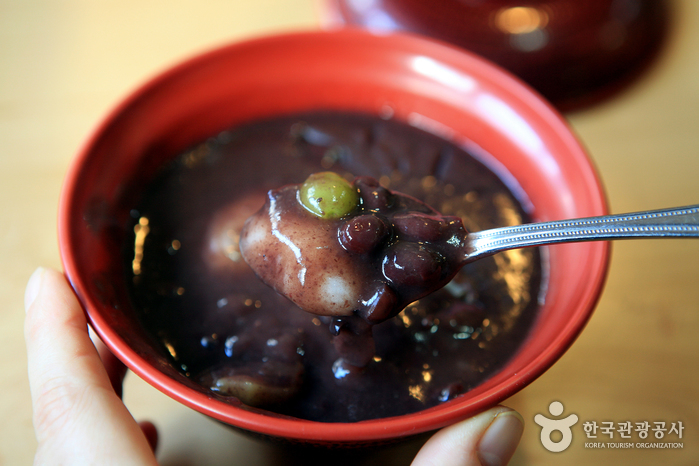

![Hyehwa1938 [Korea Quality] / 혜화1938 [한국관광 품질인증]](http://tong.visitkorea.or.kr/cms/resource/52/2529152_image2_1.jpg)
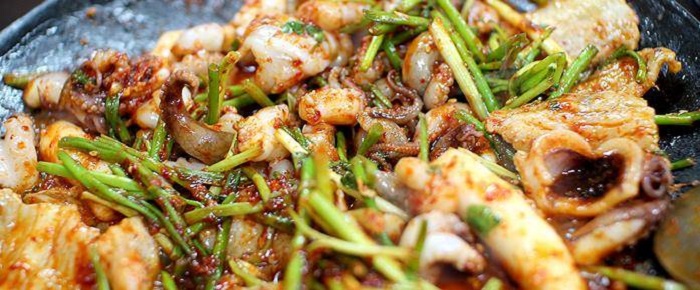
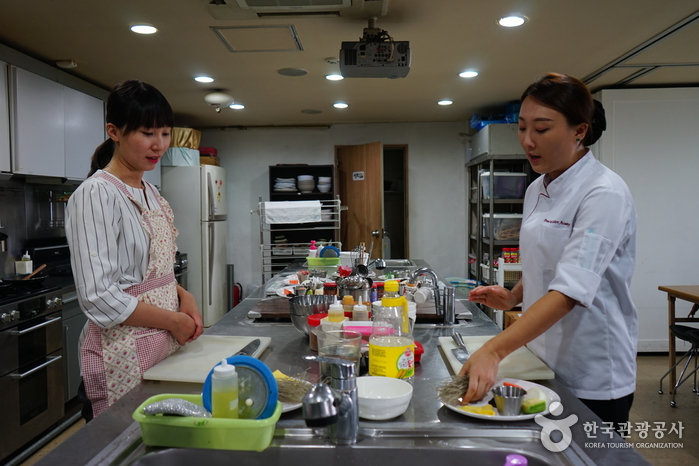


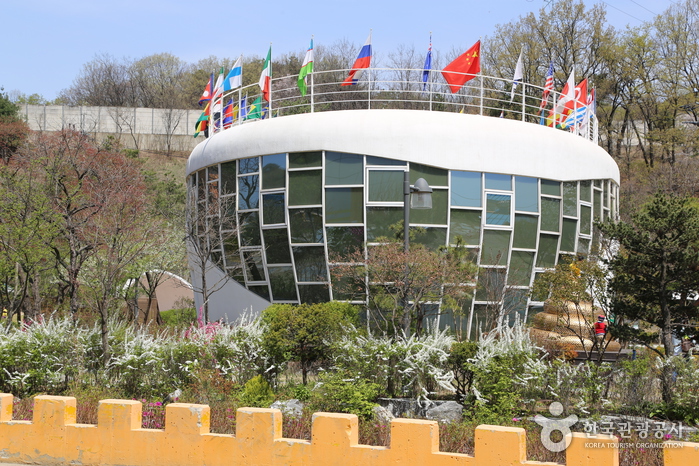
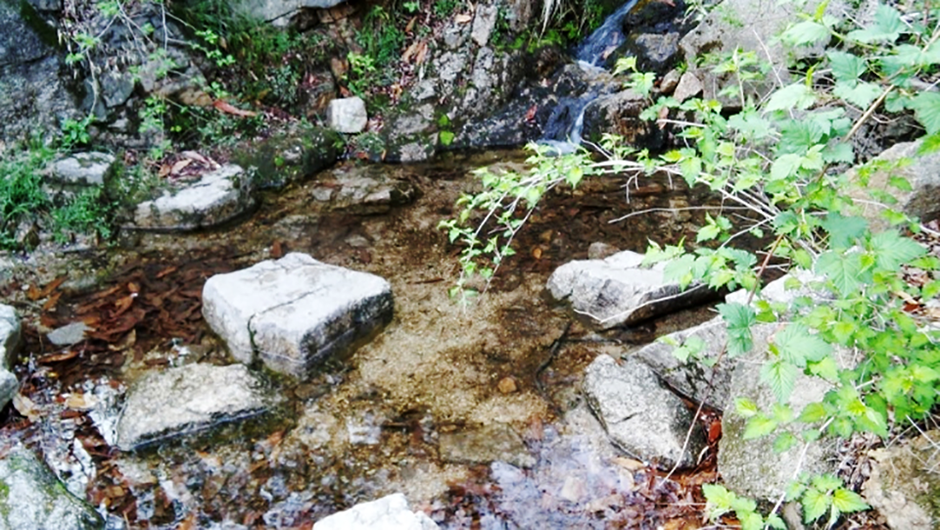
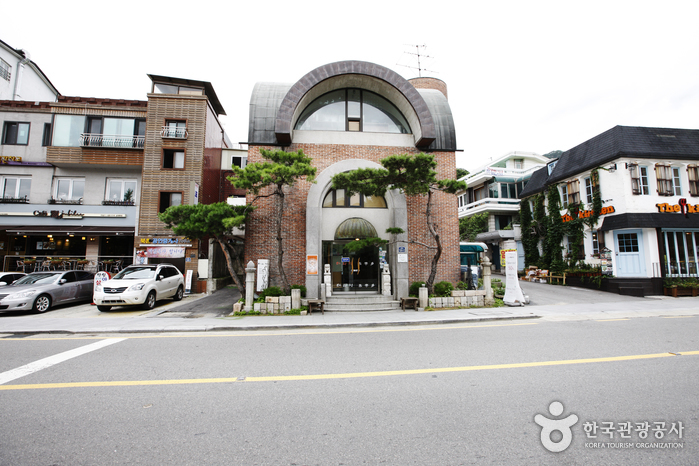
 Français
Français
 한국어
한국어 English
English 日本語
日本語 中文(简体)
中文(简体) Deutsch
Deutsch Español
Español Русский
Русский